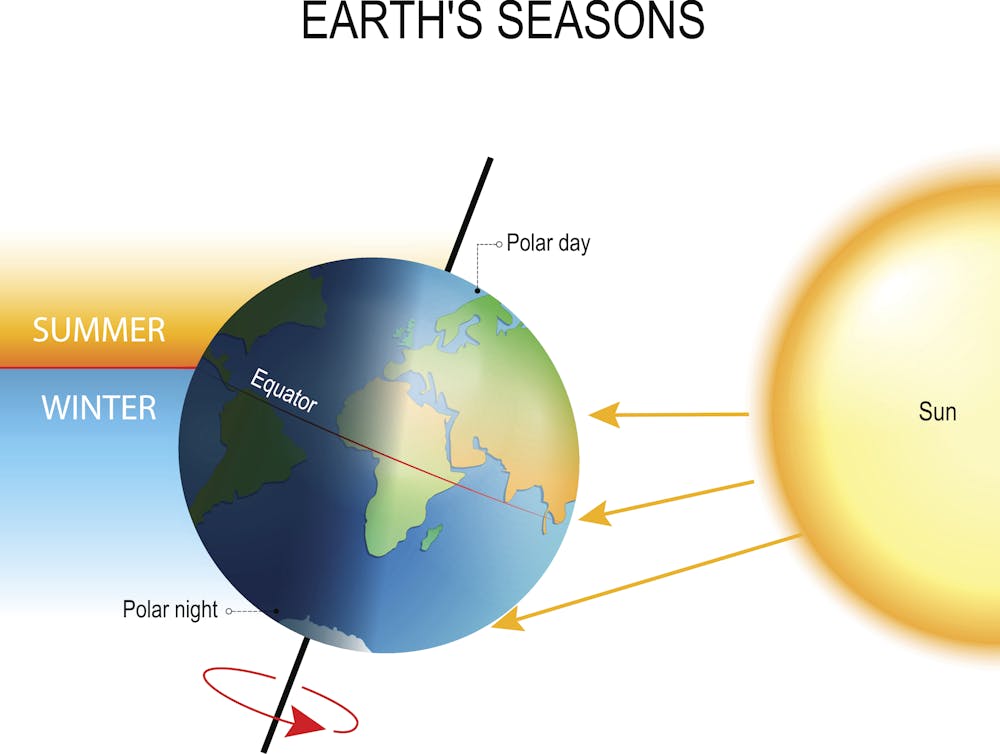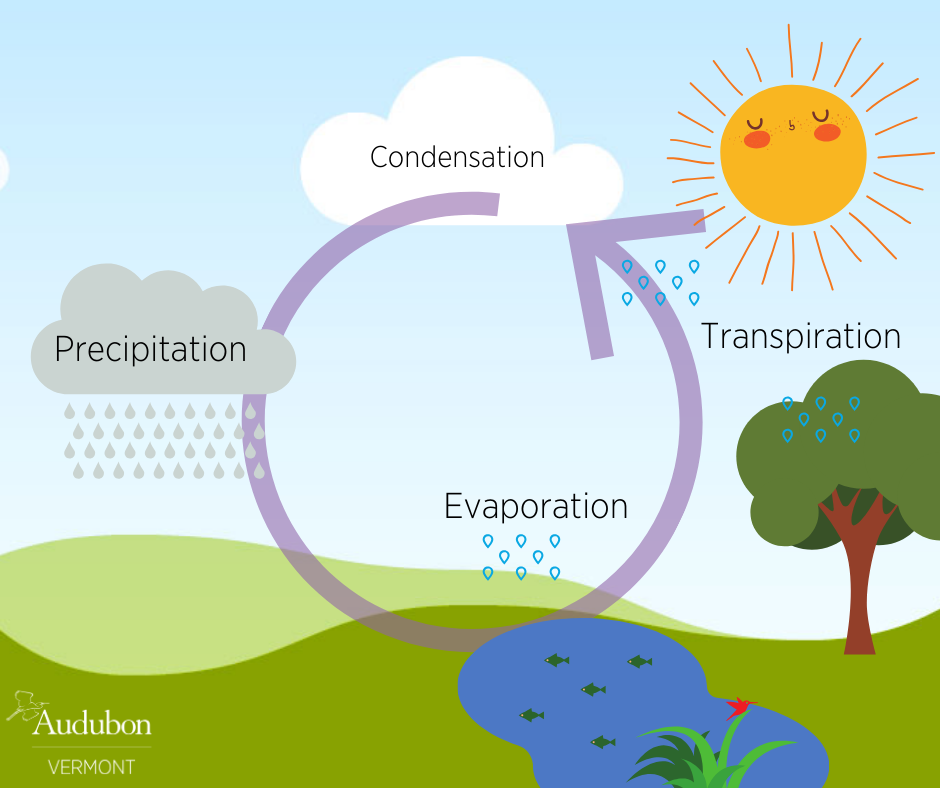A term that describes the circulation of heat energy by air and water
Convection
When liquid water heats up, it can turn into water vapor in a process called...
evaporation
Clouds form under _________ pressure conditions.
When a warm and cold air mass meet, it creates a...
front
What state is McPeek from?
New Jersey
The sun transfers heat through electromagnetic waves. This is called...
radiation
During the day, the hot sand on the beach warms up the air and causes a convection current. Does this create a land breeze or a sea breeze?
When water vapor rises into the atmosphere into cooler temperatures, the water vapor condenses onto...
the surface of dust or smoke particles
When a warm, humid air mass crashes into a cold, dry air mass, where does the warm air go?
up over the cold air mass
How many cats does McPeek have?
3
At the beach, the sun heats up the sand faster than the water. The warm air above the sand rises, moves over the ocean, then drops down over the water and creates the sea breeze. The process of heat transfer through the cycling of warm and cold air creates a...
convection current
Explain what would need to be changed in this setup to make it a fair test.
1. equal amounts of water and sand
2. equal distance from the lamp
The ingredients for cloud formation are...
1. water vapor
2. smoke/dust particles
3. air
When a warm, humid air mass crashes into a cold, dry air mass, where does the cold air go?
down below the warm air mass
What type of pet did McPeek grow up with?
Dogs <3
Which heats up faster: sand or water? How do you know?
Sand heats up faster. I know this because sand heated up faster when we tested it in the lab.
What is the main cause for seasonal variations in temperatures in the Northern and Southern hemispheres?
a. Differences in Earth's distance from the sun
b. Earth's tilt on its axis as it orbits the sun
c. Earth's rotation on its axis
b. Earth's tilt on its axis as it orbits the sun

Which statements correctly describe parts of the water cycle and how clouds form?
(1) Water evaporates from Earth's surface as it changes from a liquid to a gas.
(2) Water vapor rises with warm, rising air.
(3) At higher altitudes, water vapor and dust particles condense into clouds.
(4) Low-pressure conditions help clouds form.
1, 2, 3, and 4
A warm air mass crashes into a cold air mass. What type of weather can this cause?
heavy rain or snow, thunderstorms, heavy winds
McPeek's two majors in college
Biology and Spanish
How might a warm water current that passes by a coastal region have an effect on the region's weather?
It would warm the coastal region during winter months and cool it during summer months.
Which of the following contributes to the uneven heating of Earth?
(1) Different weather catastrophes at different parts of the globe
(2) Different air mass movement at different parts of the globe
(3) The Sun's energy being absorbed differently at different latitudes
(4) The Sun's energy being absorbed differently by land and water
3 and 4
Describe or draw the events of the water cycle using the following key terms:
(1) evaporation (4) gravity
(2) condensation (5) energy from the Sun
(3) precipitation

What type of weather would not be caused by a front?
sunny weather
McPeek was president of this club in college
Acapella